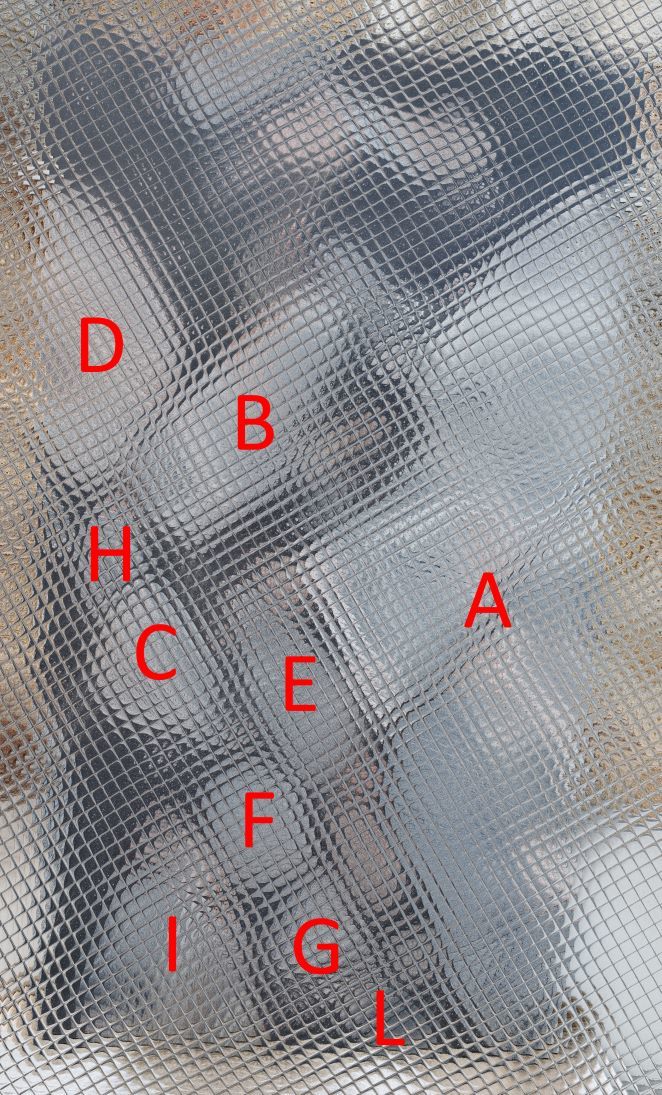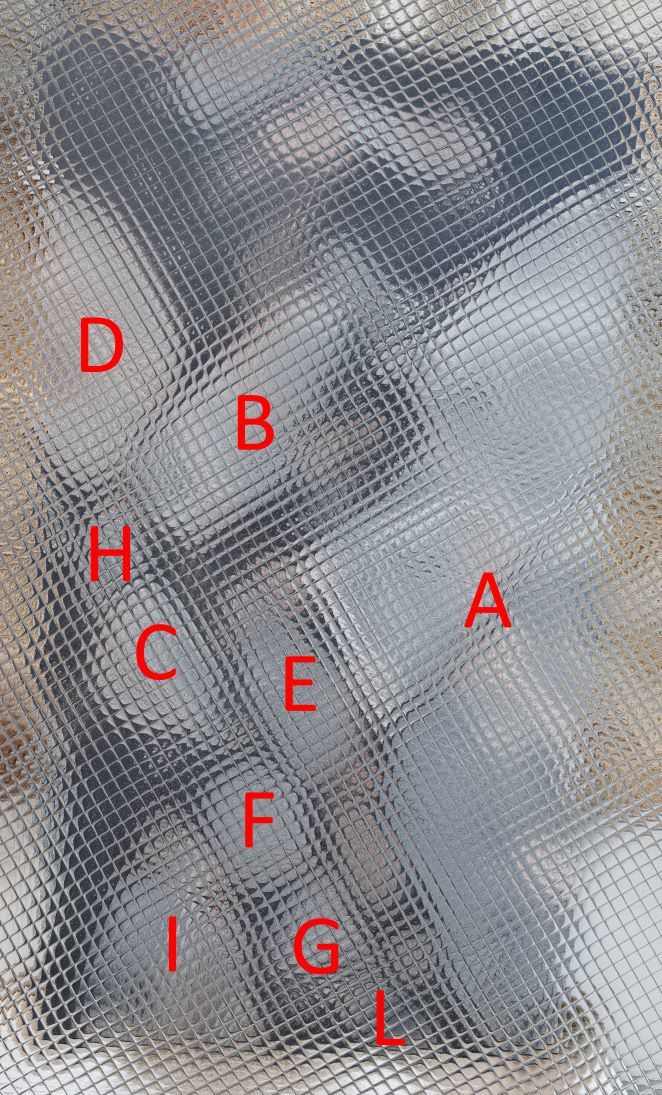Il s'agit d'une Earthcache, il n'y a pas de récipient à chercher, mais il faut répondre aux questions à la fin du descriptif.
ATTENTION cette Earthcache se trouve au Jardin des plantes qui est soumis aux horaires d'ouverture (entrée gratuite). Le jardin est ouvert tous les jours de 8h à 17h30. Voici le lien pour vérifier ces horaires.
Brèche d’impact de l’astroblème de Vredefort
Vous vous trouvez devant une plaque de roche spectaculaire appelée La Brèche d’impact pseudotachylitique de l’astroblème de Vredefort. Elle provient de la carrière de Leeukop, secteur de Parys en Afrique du Sud. Ce morceau de roche ne comporte pas de météorite, mais c’est une roche qui a fondue sous énorme pression et chaleur lors de son impact sur Terre. C’est une partie d’une veine pseudotachylitique qui a refroidi dans une fissure contemporaine de l’impact. Elle se trouvait sous l’endroit de l’impact, dans les roches fissurées.
De quoi est composée cette veine ?
C’est une roche faite de pseudotachylite (verre d’impact) très sombre (roche vitreuse de composition "granitique" issue de la fusion du socle archéen local) dans laquelle "flottent" des fragments roses de socles, fragments anguleux et le plus souvent arrondis de nature gneissique, migmatitique ou granitique, représentatifs du socle archéen local.
Les deux parties de la roche ont donc une composition chimique assez similaire malgré la différence visuelle. La pseudotachylite, la roche fondue, circulait dans les fissures crées par l’impact et arrachait des morceaux anguleux des parois du socle archéen. Le transport dans la pseudotachylite les arrondissaient et/ou éclataient en plus petits fragments.
Que nous raconte cette roche ?
L'astroblème de Vredefort (Afrique du sud) est une structure d'impact d'environ 300 km de diamètre. C’est le plus vieux (2023 Ma) et l'un des plus grands cratères de météorite connu sur Terre. Son centre est occupé par ce qui reste d'un piton ou anneau central. Depuis 2 milliards d'années qu'il existe, ce cratère est complètement érodé et sa morphologie initiale a disparu. Les éjectas et autres brèches ayant recouvert ses environs et le fond du cratère lui-même ont disparu, à quelques exceptions près comme près de Bobbejaanrant. Mais les granites, migmatites et autres roches métamorphiques archéennes qui constitue le "piton central" (le dôme de Vredefort) sont parcourues de fissures ouvertes contemporaines de l'impact, fissures ouvertes qui se sont fait remplir par un mélange de roches fondues, d'éjectas et de fragments des parois venus de plus haut.
Astroblème : l’ensemble des traces laissées par l’impact d’une météorite. Un cratère d’impact.
Pseudotachylite : une roche vitreuse fondue lors de l’impact de la météorite. Un verre d’impact. Les pseudotachylites sont des roches à l'aspect sombre, plus ou moins vitreux et formées de roches broyées et fondues sous l'effet d'une élévation brutale de la température. Elles se forment le plus souvent par fusion frictionnelle à l'interface entre deux plans de faille lors d'un séisme. Elles peuvent également se former à la base d'un glissement de terrain ou lors de l'impact d'une météorite.
Sources
https://planet-terre.ens-lyon.fr/ressource/Img437-2013-10-14.xml
https://planet-terre.ens-lyon.fr/ressource/Img436-2013-10-07.xml
https://planet-terre.ens-lyon.fr/ressource/Img435-2013-09-30.xml
Wikipedia
Questions pour valider cette Earthcache :
- Observez les fragments dans la matrice pseudotachylitique, sont-ils majoritairement anguleux ou arrondis ? Pourquoi ?
- En vous aidant de la Photo 1, sous quelles lettres on voit des fragments avec des fractures secondaires qui se font envahir par la pseudotachylite ? Que se passerait-il si la roche ne se figeait pas ?
- Une photo de vous ou d’un objet vous représentant sur le site.

Photo 1
Loguez cette cache "Found it" et envoyez-moi vos propositions de réponses soit via mon profil, soit via la messagerie geocaching.com (Message Center), et je vous contacterai en cas de problème. Les logs enregistrés sans réponses seront supprimés.
English version
This is an Earthcache, there is no container to look for, but you have to answer the questions at the end of the description.
PLEASE NOTE this Earthcache is located in the Jardin des Plantes which is subject to opening hours (free entry). The garden is open every day from 8 a.m. to 5:30 p.m. Here is the link to check these times.
Impact melt rock from Vredefort astrobleme
You are standing in front of a spectacular slab of rock called the Pseudotachylyte impact melt rock of the Vredefort astrobleme. It comes from the Leeukop quarry, Parys sector in South Africa. This piece of rock does not contain a meteorite, but it is a rock that melted under enormous heat and pressure during its impact on Earth. It is part of a pseudotachylyte vein which cooled in a fissure contemporary with the impact. It was below the impact site, in the cracked rocks.
What is this vein made of ?
It is a rock made of very dark pseudotachylyte (impact glass) (vitreous rock of "granitic" composition resulting from the fusion of the local Archaean base) in which "float" pink fragments, angular fragments and most often rounded fragments of gneissic, migmatitic or granitic nature, representative of the local Archaean base.
The two parts of the rock therefore have a fairly similar chemical composition despite the visual difference. Pseudotachylyte, the melt rock, circulated in the cracks created by the impact and tore off angular pieces of the walls of the Archean base. Transport in the pseudotachylyte rounded them and/or broke into smaller fragments.
What does this rock tell us ?
The Vredefort astrobleme (South Africa) is an impact structure approximately 300 km in diameter. It is the oldest (2023 Ma) and one of the largest meteorite craters known on Earth. Its center is occupied by what remains of a central peak or ring. In the 2 billion years that it has existed, this crater has been completely eroded and its initial morphology has disappeared. The ejecta and other breccias that covered its surroundings and the bottom of the crater itself have disappeared, with a few exceptions such as near Bobbejaanrant. But the granites, migmatites and other Archean metamorphic rocks which constitute the "central peak" (the Vredefort dome) are crossed by open cracks contemporary with the impact, open cracks which were filled by a mixture of molten rocks, ejecta and fragments of the walls coming from higher up.
Astrobleme : all the traces left by the impact of a meteorite.
Pseudotachylyte : a glassy rock melted during the meteorite impact. An impact glass. Pseudotachylytes are rocks with a dark appearance, more or less glassy and formed from crushed and melted rocks under the effect of a sudden rise in temperature. They are most often formed by frictional fusion at the interface between two fault planes during an earthquake. They can also form at the base of a landslide or during the impact of a meteorite.
Questions to validate this Earthcache:
- Observe the fragments in the pseudotachylyte matrix, are they mostly angular or rounded? Because of what ?
- Using Picture 1, under which letters do we see fragments with secondary fractures which are invaded by pseudotachylyte ? What would happen if the rock didn't fix ?
- A picture of you or an object representing you, on the site.

Picture 1
Log this "Found it" cache and send me your suggested answers either via my profile or via geocaching.com (Message Center), and I will contact you in the event of a problem. Logs recorded without response will be deleted.